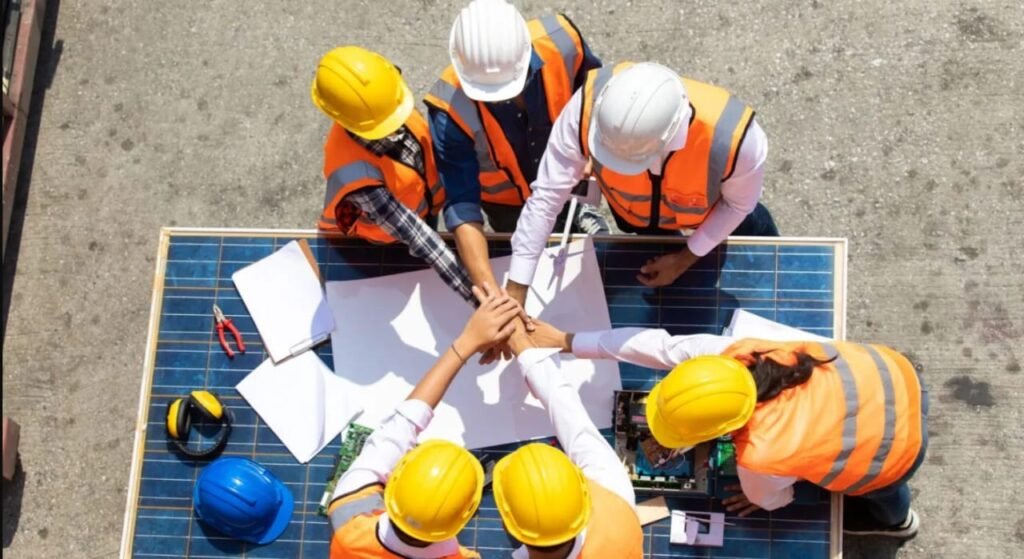The construction industry is one of the most hazardous sectors for workers. Construction sites pose numerous hazards, ranging from slips and falls to exposure to dangerous substances. Beyond physical injuries, the demanding nature of the work often damages mental health, making safety and well-being a critical focus for employers and workers alike.
It is essential to take a proactive approach to training, mental health support and encouraging a culture of safety. This article will discuss practical measures to protect workers’ physical and psychological well-being and ensure that all tasks are carried out in a supportive and safe setting.
Preventing Injuries Through Practical Skills
Construction sites are common sites for injuries such as sprains, strains and even long-term musculoskeletal disorders. These often result from improper handling of heavy materials or items that are difficult to carry. This is where participating in manual handling training can help.
Such training equips workers with the techniques they need to lift, carry and manoeuvre objects safely. For example, it teaches workers to assess the weight of a load before attempting to lift it and apply safe manual handling techniques.
Slipping on uneven or wet surfaces, falling from heights and being struck by moving objects are also prevalent risks. Practical skills like proper ladder use, harnessing techniques for working at heights and recognising trip hazards are critical to reducing accidents. Workers must also know how to use machinery and tools safely to avoid crush injuries or cuts.
The UK has robust legislation to address these risks. The Manual Handling Regulations 1992 and the Work at Height Regulations 2005 focus on preventing falls, while the Personal Protective Equipment at Work Regulations 2022 ensure workers are equipped with suitable gear to protect against various site hazards. Together, these regulations guide employers in creating a safer work environment, requiring regular risk assessments, tailored training and the implementation of preventive measures for all types of construction-related injuries.
Promoting Mental Well-being on Construction Sites
While physical injuries are often discussed, mental health challenges in construction are sometimes overlooked. Long hours, job insecurity and high-pressure environments can lead to stress, anxiety and even depression. Left unaddressed, these issues can escalate, impacting not just individuals but entire teams.
Supporting mental well-being on construction sites requires a multifaceted approach. Employers can start by raising awareness and encouraging open dialogue about mental health. This can involve implementing initiatives like:
- Counselling services: Providing access to professional help for workers struggling with mental health.
- Peer support programmes: Training workers to act as mental health champions who can support colleagues.
- Awareness campaigns: Educating workers about recognising signs of stress and burnout in themselves and others.
The Role of Education and Professional Development
Ongoing education is essential to maintaining safety standards on construction sites. Workers need to stay informed about evolving risks, new regulations and advancements in equipment or procedures. Enrolling in construction training courses can give workers the practical knowledge and skills to navigate their roles safely and efficiently.
These courses can cover:
- Hazard identification: Recognising potential risks in the workplace.
- Safe use of equipment: Proper handling of tools and machinery to avoid accidents.
- Emergency procedures: Understanding how to react in the event of a fire, structural collapse, or other emergencies.
The Health and Safety at Work Act 1974 mandates that employers provide adequate training to their workers, ensuring they are equipped to handle the challenges of their roles. By investing in education, organisations not only comply with regulations but also build a more competent and confident workforce. Well-trained workers are less prone to making mistakes, which directly decreases the chances of accidents.
Implementing Site Safety Measures
Although construction sites are inherently risky, numerous accidents can be prevented by adopting appropriate safety protocols. Safety measures should be comprehensive, addressing everything from personal protective equipment (PPE) to emergency planning.
Key safety measures include:
- Personal Protective Equipment (PPE): Workers must wear appropriate PPE, such as helmets, gloves, goggles and high-visibility clothing, to protect against specific site hazards.
- Clear signage: Proper signage can warn workers and visitors of potential dangers, such as slippery surfaces or electrical hazards.
- Routine safety checks: Regular inspections of scaffolding, machinery and other site components help identify and address potential risks before they lead to accidents.
Moreover, risk assessment is another crucial aspect of construction safety. Training and awareness allow site managers and safety officers to identify potential hazards, evaluate their severity and implement controls to mitigate them.
Likewise, following the Construction (Design and Management) Regulations 2015 is essential. These regulations provide a detailed framework for managing safety at every level of a construction project, from the initial planning and design to execution and completion.
Fostering a Culture of Safety and Collaboration
A safe construction site is one where everyone—workers, supervisors and managers—actively contribute to maintaining safety standards. Creating a culture that values safety and collaboration involves:
- Open communication: Workers should feel encouraged to report hazards or unsafe practices without the worry of facing retaliation.
- Recognition and rewards: Acknowledging and rewarding proactive safety behaviour encourages others to follow suit.
- Regular safety meetings: Holding team discussions about safety concerns and improvements helps reinforce its importance.
These brief meetings focus on specific safety topics, such as operating equipment in bad weather or handling hazardous materials. By fostering this culture, organisations reduce risks and build trust and morale among workers.
Conclusion
Safety and well-being are fundamental to the construction industry’s success. Adhering to UK regulations and fostering a culture of collaboration further solidifies a commitment to safety. A proactive approach benefits everyone involved, reducing accidents, improving job satisfaction and ultimately contributing to the industry’s growth and sustainability.




